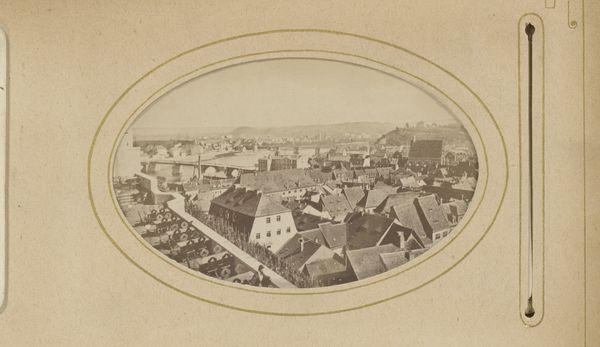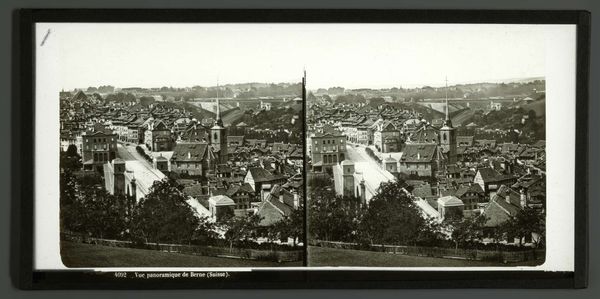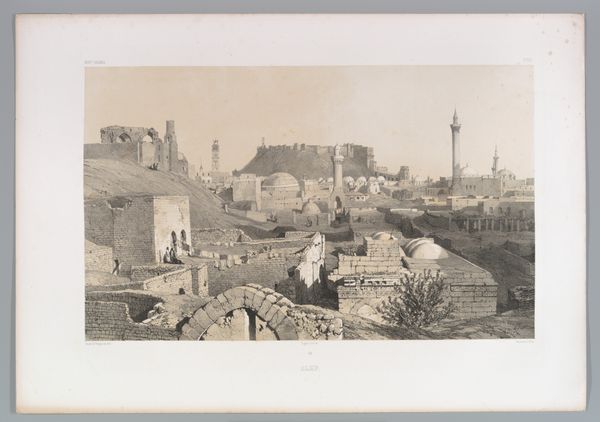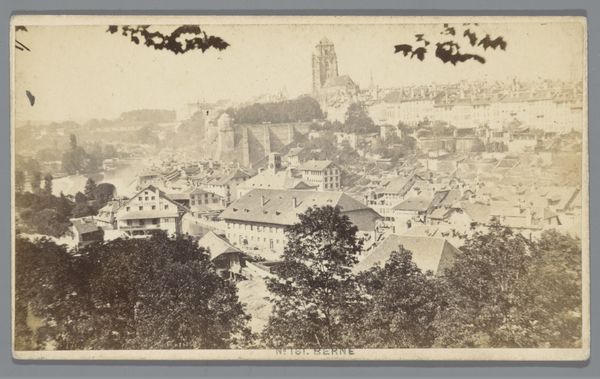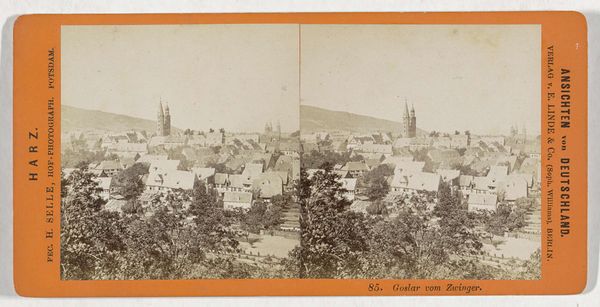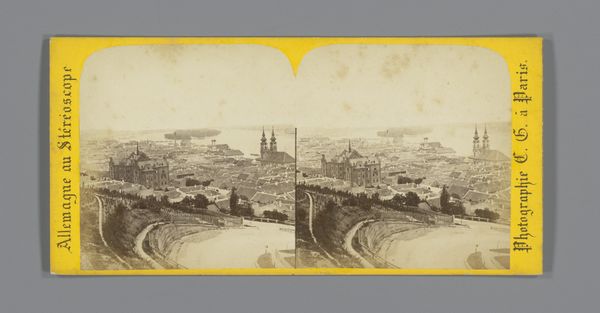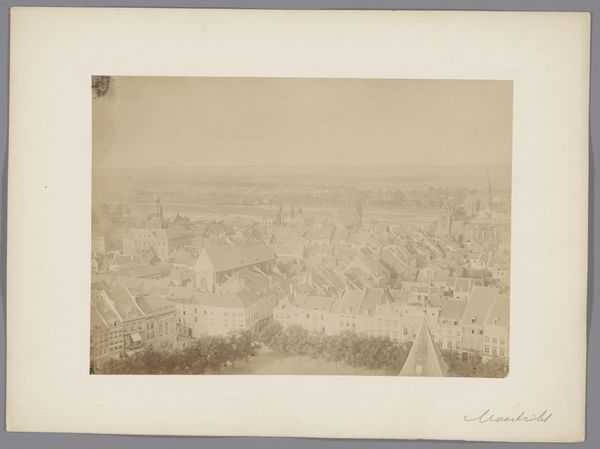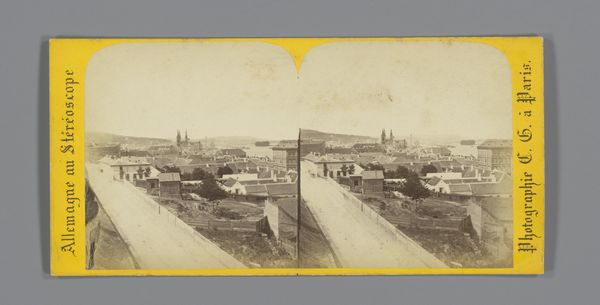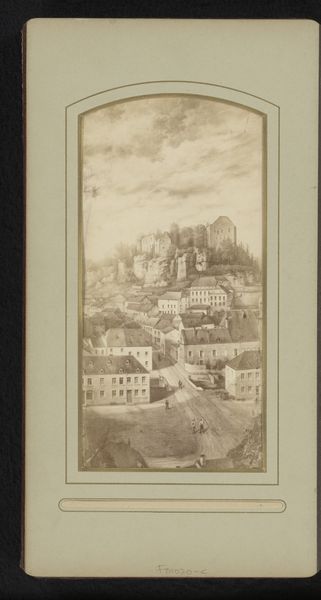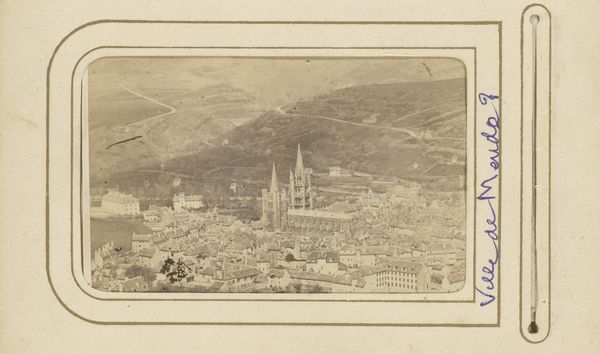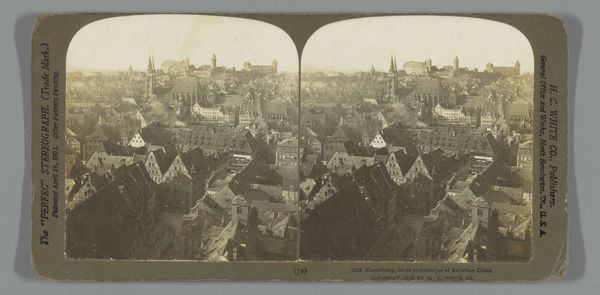
Dimensions: height 75 mm, width 150 mm
Copyright: Rijks Museum: Open Domain
Curator: Let’s turn our attention to this striking vista, “Panorama op de Sint-Janskerk in Luik,” a gelatin silver print captured sometime in the 1860s. Editor: Immediately, I’m drawn to the stark, almost sepia-toned rendering of this cityscape, dominated by the powerful spire and dome. There’s a beautiful feeling of a lost time. Curator: Indeed. The vantage point is key; it invites a top-down reflection upon the social structure embedded in urban spaces during that era, positioning the church literally and symbolically above the masses. The growth of photography aligned with intense debates about social change, visibility, and representation. This shot makes me think about power, control, surveillance, and the photographer’s role in those systems. Editor: Absolutely, the symbolism inherent in the central placement of the Sint-Janskerk, emphasizes its enduring cultural weight amidst burgeoning urban expansion. The photograph evokes visual traditions harking back to illuminated manuscripts or even medieval tapestries. One sees here, very clearly, cultural continuity, and visual echo across diverse mediums. Curator: It also complicates things – that supposed continuity masked the lived realities of an era increasingly shaped by rapid industrialization and inequality, which may or may not have been fully understood by whoever created this artwork. But it makes me consider who was excluded in making such images and from deciding the norms that went along with those images. Editor: That's a critical point. Looking at this piece through a psycho-geographic lens, I can sense how urban environments like Liege became both theaters of progress and palimpsests of historical symbols – especially here with this religious structure overseeing every domestic activity under its protection. This tension makes the artwork all the more resonant. Curator: Thank you; your readings add critical texture to my own contextual examination, allowing us both a better view to understanding these intricate layers within what might at first seem like a simple photographic document. Editor: Yes, thinking across historical and symbolic frames opens new perspectives not only on what we see but what such sights evoke over decades—across personal memory and history.
Comments
No comments
Be the first to comment and join the conversation on the ultimate creative platform.
